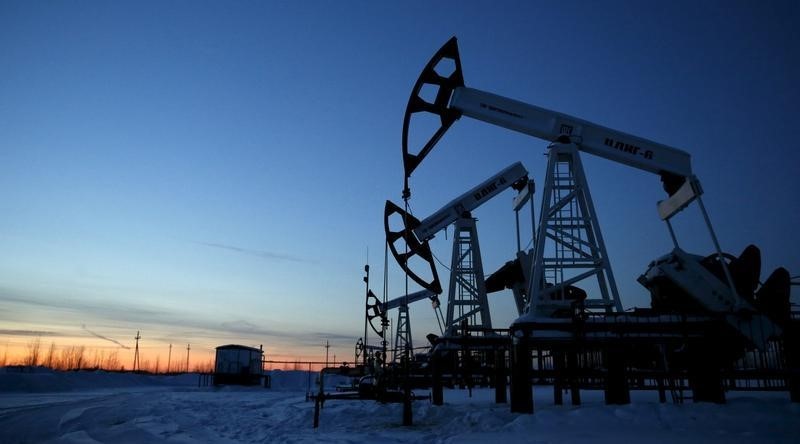By Simon Falush
LONDON (Reuters) - Oil slid on Thursday, dented by record U.S. crude inventories at the Cushing delivery point, worries about the demand outlook, and as Goldman Sachs (N:GS) said prices would remain low and volatile until the second half of the year.
In a sign that producers are still competing for market share by lowering prices, Iran offered its crude to Asia at a discount to rival OPEC producer Saudi Arabia.
Brent crude futures were down 31 cents at $30.53 per barrel at 0850 GMT.
U.S. West Texas Intermediate (WTI) crude futures were at $26.76 per barrel, down 69 cents and not far off the $26.19 intraday low hit in January that was their weakest price since 2003.
"We're grinding lower on bearish fundamentals," Bjarne Schieldrop, chief commodity analyst at SEB in Oslo, said.
"There's a price fight within OPEC for Asian market share, and there are worries that storage capacity is going to be breached."
He added that oil's fall was also part of a general move in global markets away from riskier assets.
Inventories at the Cushing, Oklahoma delivery point for U.S. crude futures rose to an all-time high just shy of 65 million barrels, data from the government's Energy Information Administration (EIA) showed on Wednesday.
Goldman Sachs said the overhang in oil supplies, together with an economic slowdown in China, means prices will remain low until the second half of the year.
"The risks of China growth concerns and oil price downside ... materialised faster than we anticipated," the bank said in a client note.
"We expect oil prices will continue to fluctuate between $20 per barrel (operational stress level) and $40 per barrel (financial stress level) with significant volatility and no price trend until 2H2016," it added.
Iran has priced its heavy crude oil in the physical market to Asian buyers slightly cheaper than Saudi Arabia, an unusual move indicating Tehran is willing to offer discounts to regain market share following the lifting of sanctions.
Iran traditionally sets monthly prices to customers in Asia - its biggest market - in parallel with Saudi Arabian crude prices, yet for March it offered buyers its supplies at a discount of 10 cents per barrel compared to Arab Medium, a Saudi grade of similar quality.

Oil prices have fallen almost 75 percent since mid-2014 as competing producers pump 1-2 million barrels of crude every day in excess of demand, just as China's economy grows at its lowest rate in a generation.